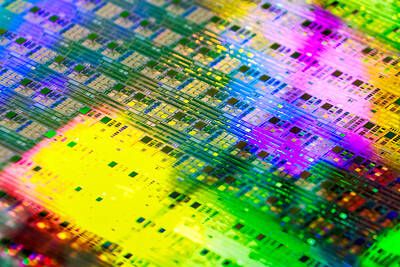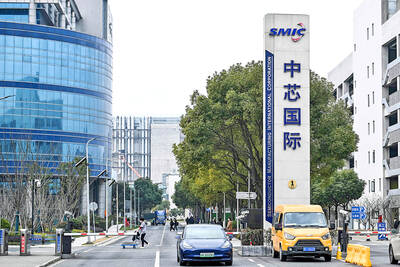A national annuity plan (
This is the time the plan was originally due to be implemented.
In September, however, it was temporarily suspended following the 921 earthquake.
However, according to Chiang Pin-kung (
"It is not appropriate to implement the annuity plan before the effects of the reconstruction plan have become apparent, or before the government's financial status has been made clear," Chiang said.
The chairman made the announcement at a press conference in which the council presented its white paper on national economic policy, entitled the "Cross the Century National Development Plan" (
In an earlier report, the council estimated the government's deficit for the current fiscal year [which ends at the end of next year] would increase by NT$116.9 billion to NT$507.1 billion. The figure represented a 5 percent increase over the estimated deficit before the quake. The accumulated government debt would amount to NT$2.39 trillion, or 24.1 percent of this year's GNP, according to the report.
However, while the government works out exactly how much reconstruction will cost, postponing the re-evaluation of the national annuity plan to a year from now "does not mean its implementation will be delayed for a year," Chiang said.
"Once an accurate estimate of the cost of the reconstruction effort can be made, and the financial sources are confirmed, then we can start the plan," he said.
Once implemented, the annuity plan will provide every citizen over 64 with a monthly pension of NT$8,700. The plan will be paid for by taxing the salary of every working citizen between the age 25 and 64. Any shortfall would be covered by the government.
According to estimates by the council, the government will have to pay in NT$23 billion to NT$30 billion during the first year of the plan.
As for financial sources to pay for the plan, increasingly promising economic prospects next year in Taiwan may help boost tax revenues.
Outside Taiwan, "the international community will be experiencing strong economic growth [which supports Taiwan's export-oriented economy]," Chiang said. "We are especially proud that the trade relationship with Japan has improved significantly."
Exports to Japan increased by 26.2 percent this year, Chiang said.
"With China's better economic performance, our trade with Hong Kong has also increased," Chiang said. "Exports drive up our economic performance."
Chiang also estimated that an economic growth rate of 6.1 percent should also be achieved next year. "The reconstruction effort has gone smoothly, and it will begin to boost the economy next year," he said.
"It should be possible to complete the preliminary work for the reconstruction by the end of this year," Chiang said.
Of a total of 42 projects, the sixteen that remain unfinished are expected to be carried out by the end of this week.
"The development plan for the Sun Moon Lake (
And with booming world economies and a successful recovery from the earthquake, Chiang sounded a positive note.
"Besides aiming to become a green technology-oriented island by 2011, with a stable consumer price index and annual economic growth of 6 percent, we also have a four-year plan ending in 2004," he said. "By then, we aim to have the country's average personal annual income at a level of NT$600,000."
That would be equal to the annual personal income level of the UK in 1996.

SEMICONDUCTOR SERVICES: A company executive said that Taiwanese firms must think about how to participate in global supply chains and lift their competitiveness Taiwan Semiconductor Manufacturing Co (TSMC, 台積電) yesterday said it expects to launch its first multifunctional service center in Pingtung County in the middle of 2027, in a bid to foster a resilient high-tech facility construction ecosystem. TSMC broached the idea of creating a center two or three years ago when it started building new manufacturing capacity in the US and Japan, the company said. The center, dubbed an “ecosystem park,” would assist local manufacturing facility construction partners to upgrade their capabilities and secure more deals from other global chipmakers such as Intel Corp, Micron Technology Inc and Infineon Technologies AG, TSMC said. It

People walk past advertising for a Syensqo chip at the Semicon Taiwan exhibition in Taipei yesterday.

NO BREAKTHROUGH? More substantial ‘deliverables,’ such as tariff reductions, would likely be saved for a meeting between Trump and Xi later this year, a trade expert said China launched two probes targeting the US semiconductor sector on Saturday ahead of talks between the two nations in Spain this week on trade, national security and the ownership of social media platform TikTok. China’s Ministry of Commerce announced an anti-dumping investigation into certain analog integrated circuits (ICs) imported from the US. The investigation is to target some commodity interface ICs and gate driver ICs, which are commonly made by US companies such as Texas Instruments Inc and ON Semiconductor Corp. The ministry also announced an anti-discrimination probe into US measures against China’s chip sector. US measures such as export curbs and tariffs

The US on Friday penalized two Chinese firms that acquired US chipmaking equipment for China’s top chipmaker, Semiconductor Manufacturing International Corp (SMIC, 中芯國際), including them among 32 entities that were added to the US Department of Commerce’s restricted trade list, a US government posting showed. Twenty-three of the 32 are in China. GMC Semiconductor Technology (Wuxi) Co (吉姆西半導體科技) and Jicun Semiconductor Technology (Shanghai) Co (吉存半導體科技) were placed on the list, formally known as the Entity List, for acquiring equipment for SMIC Northern Integrated Circuit Manufacturing (Beijing) Corp (中芯北方積體電路) and Semiconductor Manufacturing International (Beijing) Corp (中芯北京), the US Federal Register posting said. The